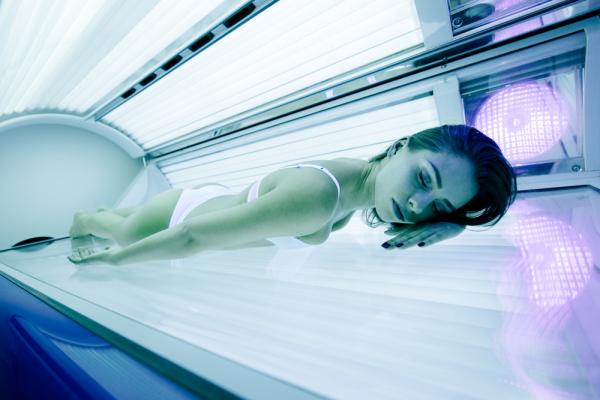It's now almost one year to the day that the Food and Drug Administration publicly recommended that teenagers be prevented from using tanning beds. It was a compelling and worthwhile statement based on science that would save thousands of young lives.
"Indoor tanning is a known contributor to skin cancer, including melanoma (its most deadly form), and other skin damage. Yet, 1.6 million minors indoor tan each year, increasing their risk of skin cancer and other damage," the agency stated on Dec. 18, 2015. "According to the American Academy of Dermatology, those who have been exposed to radiation from indoor tanning are 59 percent more likely to develop melanoma than those who have never tanned indoors."
That said, however, the FDA has yet to make its final ruling on the matter. But a new study estimating significant health and financial benefits of such a ban will hopefully prompt the agency to finally act.
The study, published this week in the Journal of the American Academy of Dermatology, stated that for more than 61 million Americans 14 years and younger, more than 6,700 lives would be spared and savings on medical care would exceed a third of a billion dollars.
"Restricting indoor tanning among minors younger than 18 years was estimated to prevent 61,839 melanoma cases, prevent 6,735 melanoma deaths, and save $342.9 million in treatment costs over the lifetime of the 61.2 million youth age 14 years or younger in the United States," according to the study, called "The potential impact of reducing indoor tanning on melanoma prevention and treatment costs in the United States: An economic analysis." Its lead author, Gery P. Guy, Ph.D, a researcher from the Centers for Disease Control and Prevention, along wth his CDC colleagues added that, "The estimated health and economic benefits increased as indoor tanning was further reduced."
 A year ago, we assessed strong legislative support across the country for limiting tanning salon access to minors, but a federal ban to prevent those 18 and under from absorbing indoor ultraviolet radiation would be the most effective measure.
A year ago, we assessed strong legislative support across the country for limiting tanning salon access to minors, but a federal ban to prevent those 18 and under from absorbing indoor ultraviolet radiation would be the most effective measure.
"As many as 40 states across the U.S. have already adopted some form of restriction on tanning for minors," we reported last December. "But if a national measure is adopted, it would restrict service in areas where the practice is widely popular, like gyms, shopping malls and college campuses."
Therefore, it's good to see that the researchers at the CDC are keeping the spotlight on this important health issue.
“The AADA has supported this age restriction since the FDA announced it last year, and we hope this study motivates the FDA to save lives and lower health care costs by finalizing this proposal as soon as possible," said Dr. Abel Torres, the association's president, in a published statement. "Moreover, we hope these dramatic figures remind the public, especially young people, to stay out of indoor tanning beds.”
We could not agree more.




